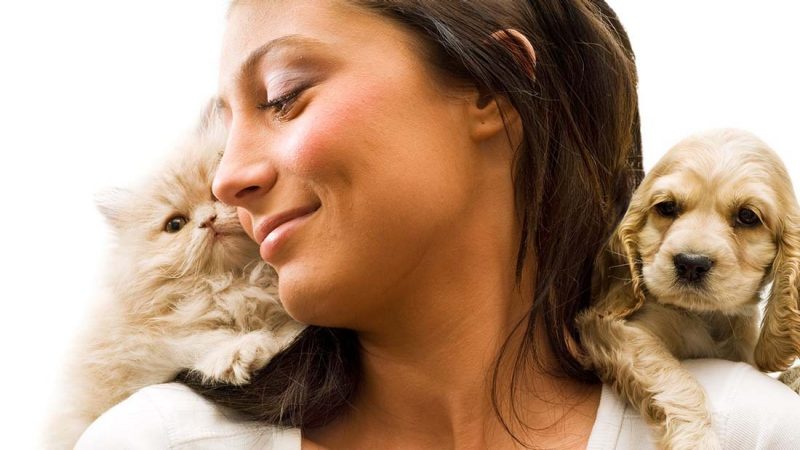There are five love languages that describe the way how people receive and express their love. These are physical touch, words of affirmation, quality time, acts of service, and receiving gifts.
ManyPets' resident vet expert, Dr. Kirsten Ronngren, has shared her tips for identifying our dog's love language and the best way we can reciprocate their love.
1. Physical touch
This one is a no-brainer!
"Does your pet repeatedly lick your face, climb on your lap or tend to jump up - even when they know they're not supposed to?" said Dr Ronngren. "These pets want one thing more than anything else – and that's lot's physical fuss.
"To show your pet you care, provide lots of cuddles, belly rubs and fur strokes and they will be your best friend - this can be a way to soothe them during stressful moments. Making sure to give your pet physical reassurance and affection is important, particularly when in unfamiliar territory.
"It's also vital to understand when this is not the case, as independent pets can find too much physical contact unsettling, and may well tell you when they've had enough."
2. Words of affirmation
Be it their friendly barks when they get excited to see you come home or when they purr when you stroke them, this is how they express words of affirmation.
Dr. Ronngren explained: "At times deafening (but always adorable), these pets respond really well to training and praise, so make sure to always offer them verbal, positive reinforcement.
"This also means they'll recognise when the tone of your voice changes, so being vocal, both in a concise and light manner, will help your pet learn and understand what you're trying to tell them.
"Pets who are soothed by your voice could also benefit from background noise such as the radio when alone in the house to keep them calm ahead of your return home."
3. Quality time
Not leaving your side and always wanting to be near you shows that this is their way of showing affection. If you're planning to be out all day, a quick game of fetch or anything before you head out will mean a lot to your pet.
"If this is your pet's love language, making time to play with your pet is a must - they love human company and might wake you up extra early to show you their affection if they don't get enough one on one time," shared Dr. Ronngren.
"Making sure they've had enough exercise and mental stimulation before you leave the house is essential."
4. Acts of service
When it comes to humans, this love language translates to helping out with tasks or chores. For our pets, acts of service are more like giving you kisses or cuddles when you're upset or after a long day.
Dr. Ronngren explained: "Pets with this love language just want to find ways to show they are there for you, whether that’s a cuddle after a long day, or giving you kisses when you might be upset. They're incredibly intuitive, and always know when you've had a bad day, so you can count on them to be your furry comfort blanket when you’re feeling down.
"Offering your pet physical and verbal signs of affection during these moments is a great way to show your pet you appreciate them.
"Demonstrating appreciation through your own acts of service, from a long walk outdoors to giving physical comfort in stressful situations, is a great way to show you’re there, and you care."
5. Gift giving and receiving
The giant muddy stick or things that they randomly pick and bring to you are signs of their gift-giving.
"Gifts from the garden (no matter how muddy) are a gesture of their love – and they also love receiving gifts from you in return," said Dr Ronngren.
"But don't worry, communicating with your pet in this language doesn't need to involve a rodent or dirt on your carpet. It can mean you making them a simple homemade treat, or playing a game using their favourite toy.
"Dogs with this love language will also respond well to treats during training, so make sure to pack them before puppy training!"



